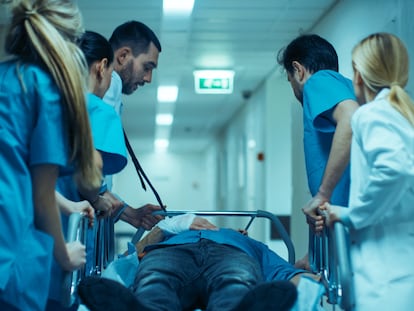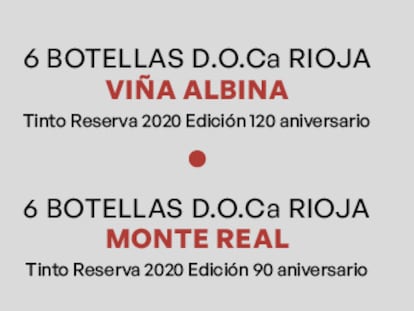Cable en el que EEUU analiza los avances españoles en materia nuclear
En 2009, la Embajada de Madrid da cuenta de los cambios recientes en materia de seguridad en las centrales
| ID: | 189375 |
| Date: | 2009-01-29 11:39:00 |
| Origin: | 09MADRID98 |
| Source: | Embassy Madrid |
| Classification: | SECRET//NOFORN |
| Dunno: | 08MADRID1182 08MADRID1362 08STATE135193 |
| Destination: | R 291139Z JAN 09 FM AMEMBASSY MADRID TO SECSTATE WASHDC 0134 INFO AMCONSUL BARCELONA NCTC WASHINGTON DC USMISSION UNVIE VIENNA USEU BRUSSELS HOMELAND SECURITY CENTER WASHINGTON DC DEPT OF ENERGY WASHINGTON DC CIA WASHDC |
S E C R E T MADRID 000098 NOFORN PASS TO SUZANNE MCCORMICK AT INR/I ELAINE SAMSON AND STACIE ZERDECKI AT EUR/WE, MARC NORMAN AT S/CT JANICE BELL AT INR BETH DAUGHARTY AT OES/STC PASS TO NRC E.O. 12958: DECL: 01/26/2034 TAGS: PINR, KNNP, MNUC, PARM, SP, PINS, PTER, KGIC, ENRG, TRGY SUBJECT: SPAIN TAKING STEPS TO SAFEGUARD NUCLEAR MATERIAL AND FACILITIES (C-WP8-01022) REF: A. 08 STATE 135193 B. 08 MADRID 1362 C. 08 MADRID 1182 Classified By: A/DCM William Duncan for reasons 1.4 (b), (c), and (d) 1. (C) SUMMARY: Cognizant of the threat posed to its nuclear industry by terrorists and determined to counter a spate of bad publicity from recent accidents at its nuclear facilities, the GOS is taking steps to ensure the security of its nuclear facilities. This cable provides a backdrop of past terrorist attacks against Spain's nuclear facilities, highlights recent security and safety incidents at nuclear plants, and, as requested in REFTEL A, addresses how Spain accounts for its nuclear material and how it is physically protecting its nuclear material and facilities. The IAEA recently fulfilled a peer review, requested by the GOS, of Spain's nuclear regulatory infrastructure and its safety practices in nuclear installations, radiation, waste, transport, emergency preparedness and -- for the IAEA's first time -- nuclear security. The IAEA,s Integrated Regulatory Review Service (IRRS) conducted site inspections, interviews and evaluations in early 2008 and in November 2008 publicly issued its final report, the results of which the IRRS team leader publicly described as "excellent" for Spain. On January 14, POLOFF met Julio Barcelo, Commissioner at Spain's Nuclear Security Council (CSN), to discuss the IRRS report and broader issues of nuclear security in Spain. POLOFF also discussed Spanish nuclear security issues on January 26 with knowledgeable U.S. Nuclear Regulatory Commission (NRC) officials, the first of whom stated that the GOS has made a concerted effort to enhance physical security requirements at its nuclear facilities since 9/11 and the Madrid train bombings in 2004. The second NRC official stressed that there is a long-standing history of bilateral cooperation between the USG and the GOS on the physical protection of nuclear facilities. END SUMMARY. //Spain's Nuclear Plants - A History of Previous Terrorist Attacks, The Threat of Future Attacks// 2. (U) Spanish nuclear facilities - Spain currently is home to eight civil-use nuclear reactors at six plants, as detailed in REFTEL B - are a past and present target of terrorism. During 1977-82, the domestic terrorist group Basque Fatherland and Liberty (known as ETA) conducted a series of attacks on the nuclear plant that was under construction in Lemoniz, in Spain's Basque Region. On separate occasions, ETA exploded bombs near the reactor and the turbines of the plant. ETA also employed sabotage, letter bombs, hand grenades, kidnappings and targeted assassinations of the chief engineer and director involved in the plant's construction. The campaign resulted in a handful of deaths and wounded several others, which contributed to the GOS decision in 1983 to discontinue the plant's construction before it ever became operational. 3. (U) The radical Islamist attacks in the United States on 9/11 and the Madrid train bombings in 2004 prompted the GOS to redouble its efforts to secure its nuclear facilities from attack. Al-Qa'ida and al-Qa'ida in the Islamic Maghreb routinely call for the recapture of the former Muslim-controlled region in the Iberian Peninsula they still call "al-Andalus." The GOS in 2004 passed its Plan for the Development of a Nuclear, Radiological, Biological, and Chemical (CBRN) Defense System, which assigned 1,682 Civil Guards to the prevention of and reaction to a CBRN attack in Spain. Spain's National Intelligence Center (CNI) issued a report in 2006 indicating that the most devastating blow that jihadists could strike against Spain would be by attacking one of Spain's nuclear plants. //Spain Requested IAEA Peer Review of Its Nuclear Regulatory Agency// 4. (C) Barcelo, the longest-serving member of the five-person Commission that constitutes the senior leadership of Spain's nuclear regulatory agency, told POLOFF that, in requesting a peer review of its nuclear regulatory infrastructure, the GOS was motivated to compare its strengths and weakness to IAEA safety standards and to exchange best practices with other countries. While the UK, France and Romania have undergone similar IAEA peer reviews, Barcelo emphasized to POLOFF that Spain is the first country to have a "full scope" IRRS review, which includes a module conducted on nuclear security. The English language version of the IAEA,s IRRS final report on Spain is available at http://www.cs.es/publicaciones/IRRSinglesokok .pdf while the supplemental report on physical security is unavailable to the public. (COMMENT: Note that the IRRS report addresses how well Spain's nuclear regulatory agency takes its responsibilities to develop a regulatory program. The report was not intended to directly assess the physical security of Spain's nuclear facilities per se, but many of its findings provide useful information for this cable. END COMMENT.) Barcelo informed POLOFF that the GOS will be engaged in follow-up activities to the report for the next two or three years. 5. (U) The IAEA/IRRS report rated the overall results for Spain as "excellent." The team identified 16 good practices utilized by Spain, offered 26 suggestions for improvement, and made five general recommendations. When applicable, several of the security-related strengths and weaknesses are highlighted in the paragraphs below. Among the items listed as an issue for improvement, the IAEA/IRSS recommended that "nothing should diminish the first priority of CSN to oversee the safety of the nuclear and radioactive installations" and that Spain should "continue its focus on ongoing efforts to strengthen CSN's activities in physical protection..." From the supplemental reports on nuclear safety, there were two recommendations. First, that that CSN participate in national radioactive waste management planning. Second, CSN was encouraged to develop a plan and communication of plans for the final disposal of spent fuel and high-level waste. (COMMENT: Spain currently only has a domestic disposal site for medium-level waste. END COMMENT.) //Specific Security Measures at Nuclear Facilities// 6. (C) One of the areas identified by the IAEA/IRSS as a strength of Spain was the collaboration between CSN and the Ministry of Interior in physical protection-related activities and the use of regulatory and licensing activities to enhance physical security at nuclear facilities. According to Spanish press reports, Spanish security forces - primarily the Civil Guard, a paramilitary law enforcement force - and intelligence services are responsible for the external security at Spanish nuclear facilities while private security guards hired by the owners of the plants have responsibility for the interior of the facilities. Barcelo told POLOFF that most of the security guards at Spanish nuclear facilities are former members of the police or military. 7. (C) Spain appears to have made progress since a number of recent high-profile incidents in which the physical security of its nuclear facilities was compromised. In 2002, Greenpeace activists stormed the Jose Cabrera nuclear facility in Zorita and scaled the dome of the plant, from which they unfurled a banner with an anti-nuclear message. The incident raised concerns about the physical security of the plant, which subsequently was shut down in 2006. Following the Zorita incident, CSN recommended that the companies that own Spain's nuclear facilities surround them with a double physical barrier. According to Spanish press reports, security at Spanish nuclear plants has been beefed up since early 2007, making access to the facilities more difficult. A late 2007 article in Spain's flagship daily El Pais details four security checks that workers must pass through at the Cofrentes nuclear plant in Valencia. The first identify themselves to guards, then pass through a finger-print check before being scanned for metals and explosives and finally undergoing a fourth, unspecified check. CNI reportedly also began conducting more stringent investigations of the nuclear facilities' employees. Finally, the article stated that there are two fences around the Cofrentes facility; one is electrified and the other has razor wire at the top of it. 8. (S) POLOFF also discussed physical security measures at Spain's nuclear facilities with an official from the U.S. Nuclear Regulatory Commission (NRC) who has been inside the Cofrentes plant within the past year. The NRC official noted that the Cofrentes plant has detection systems along its fenceline that include video cameras, motion detection sensors, and infra-red surveillance and described the physical security system as very similar to those at U.S. nuclear facilities. The NRC official also remarked that physical security measures at the Cofrentes plant go beyond what is mandated and include an additional measure of "pretty impressive" technology: a camera system in place at the service entrance to the plant which takes an image of the undercarriage of any vehicle passing through. The next time that vehicle passes the camera system, the system will take a new image and be able to detect if there have been any alterations since the last visit. 9. (S) This NRC official remarked that the GOS and the CSN have taken "very seriously" several recent breaches in the physical security at Spanish nuclear facilities. In mid-2007, for instance, Greenpeace again breached the security of a nuclear facility, this time by overflying the Extremadura-based Almaraz nuclear facility in a paraglider. In the same event, Greenpeace activists also stormed the Almaraz facility by a Zodiac-style speed boat while a third team chained themselves to the front gate. (Publicly available photos of the physical removal of the activists from the site show the Almaraz guards equipped with sidearms and night sticks.) According to the NRC official, the Cofrentes facility responded to the paraglider incident at Almaraz by placing a field of razor wire along the roofs of building that house sensitive materials. In late September 2007, guards at the Juzbado fuel-element producing facility in Salamanca found uranium tablets along a perimeter fence, in what authorities believe was an attempt by a member of the workforce to smuggle the goods out of the complex. CSN publicly stated shortly thereafter that the tablets could not be used to make a bomb. The NRC official states that the CSN was quite chagrined by the incident and its potential implications and acted to prevent its reoccurrence. 10. (S) Embassy Madrid cannot independently confirm that each of Spain's nuclear plants employs similar security precautions to those described in the preceding paragraphs about Cofrentes, but this NRC official indicates that the Cofrentes plant likely employs the physical security standard at which all Spanish nuclear plants are at or are on target to meet. The NRC official did not believe that the high-level of physical security at the Cofrentes plant was an anomaly. A second NRC official with whom POLOFF spoke stressed that there is a long-standing history of bilateral cooperation between the USG and the GOS on the physical protection of nuclear facilities, which includes bilateral meetings every few years and periodic meetings and exchanges by security officials. 11. (SBU) Unrelated to terrorism concerns but of interest from a safety standpoint, the Spanish also have experienced a number of accidents at their nuclear plants in the past 15 months. Spanish press reports and anti-nuclear campaigners suggest that cost-cutting efforts by nuclear facilities and the increasing use of subcontractors are resulting in increased safety lapses. A radiation leak at the Asco nuclear plant near Tarragona in November 2007 occurred when an inexperienced worker dumped radioactive waste in a pool of cooling water. Two plant directors were fired for covering up the incident for months before it became public in early 2008; an action which prompted CSN to recommend that the companies be fined up to roughly $30 million. Meanwhile, in the summer of 2008, a pipe carrying hydrogen burst and ignited at the Vandellos II nuclear plant. Together, the two plants were off-line for 114 days in 2008, compared to 21 in 2007. //Transport of Nuclear Materials// 12. (U) CSN has authority to carry out inspections related to the transport of radioactive material by land, air and sea, focusing on the nuclear safety and radiation protection. CSN conducts about 60 inspections annually. The inspections may be planned, reactive, announced or unannounced. The IAEA/IRSS report identified several good practices related to transportation safety, crediting the CSN for being pro-active and practical in this regard and praising it for maintaining a comprehensive, user-friendly database on the topic. //Plans or Procedures for Responding to the Theft of Nuclear Material// 13. (U) Among its good practices, Spain was praised by the IAEA/IRSS for its "well trained emergency preparedness organization" and its "very modern and well equipped emergency center." According to Spanish press reports, CSN in the aftermath of 9/11 recommended that the companies that own Spain's nuclear facilities have the obligation to notify CSN's Emergency Center - within one hour - of any detection of the theft or loss of any nuclear material, including any attempts at sabotage. Spain does have recorded incidents of presumed theft of nuclear material, however, as mentioned in paragraph 9. //Plans or Procedures for Attacks on Nuclear Facilities// 14. (SBU) CSN does not publicly comment on such security measures and the IAEA/IRSS supplemental report on physical security was not released to the public. However, according to a press report in late 2007, Spanish nuclear plants have a retaining wall made of concrete-reinforced steel to surround and protect the reactor from a missile or an airborne terrorist attack. These anti-missile "slabs" reportedly employ designs utilized by such U.S. firms as Westinghouse or GE. The retaining walls also are reportedly designed to safeguard against seismic activity. 15. (C) Spain is also taking political and operational steps to increase its ability to prevent an attack on its nuclear facilities. Throughout 2008, Spain had a very active role in the Global Initiative to Combat Nuclear Terrorism (GI). Spain hosted a table-top exercise in May, a plenary meeting in June, and a field training exercise in October. This series of events further developed Spain's expertise in nuclear terrorism-related disaster preparedness and contingency planning. As mentioned in REFTEL C, Madrid also wants to continue to deepen cooperation to combat nuclear terrorism by conducting more technical exercises and training cooperation in 2009 within a multilateral context and bilaterally with the United States. 16. (C) POLOFF concluded his meeting with Barcelo by asking how Spanish nuclear security has evolved since he became a Commissioner of the CSN in mid-2001. He responded that the GOS had "good" security measures in place before 9/11, but their implementation had become "relaxed." Barcelo assured POLOFF that these types of physical security compromises experienced in recent years could not happen nowadays. CHACON |
Traducción automática. Puede que el texto traducido no sea fiel al original
Tu suscripción se está usando en otro dispositivo
¿Quieres añadir otro usuario a tu suscripción?
Si continúas leyendo en este dispositivo, no se podrá leer en el otro.
FlechaTu suscripción se está usando en otro dispositivo y solo puedes acceder a EL PAÍS desde un dispositivo a la vez.
Si quieres compartir tu cuenta, cambia tu suscripción a la modalidad Premium, así podrás añadir otro usuario. Cada uno accederá con su propia cuenta de email, lo que os permitirá personalizar vuestra experiencia en EL PAÍS.
¿Tienes una suscripción de empresa? Accede aquí para contratar más cuentas.
En el caso de no saber quién está usando tu cuenta, te recomendamos cambiar tu contraseña aquí.
Si decides continuar compartiendo tu cuenta, este mensaje se mostrará en tu dispositivo y en el de la otra persona que está usando tu cuenta de forma indefinida, afectando a tu experiencia de lectura. Puedes consultar aquí los términos y condiciones de la suscripción digital.
Archivado En
Últimas noticias
Una jueza absuelve a Daniel Arizmendi ‘El Mochaorejas’, el secuestrador más sanguinario de los noventa en México
El conservador Nasry Asfura, abanderado de Donald Trump, proclamado presidente electo de Honduras
Lea íntegro el discurso del rey Felipe VI
Felipe VI, solo un mandamiento: no poner en peligro la convivencia
Lo más visto
- El líder groenlandés responde a Trump: “Groenlandia es nuestro país. Nuestras decisiones se toman aquí”
- La revalorización de las pensiones queda en el aire por la negativa de la derecha a apoyar otras medidas sociales
- Juan Carlos Ferrero: “Más que dolor, siento pena; los finales siempre son tristes”
- La cúpula de Vox votó por unanimidad la destitución de Javier Ortega Smith
- Trump intensifica su escalada contra la UE al sancionar a dirigentes que han atacado el discurso de odio en internet




























































